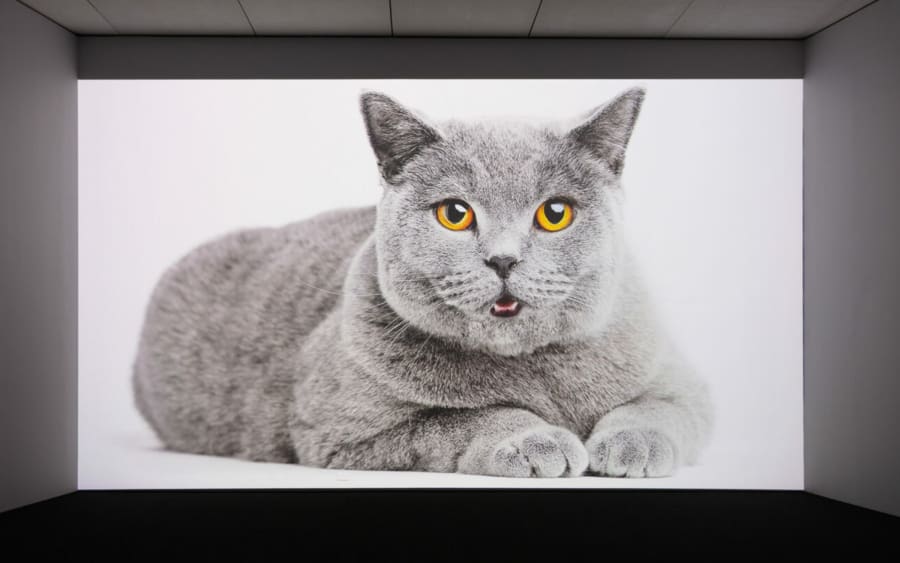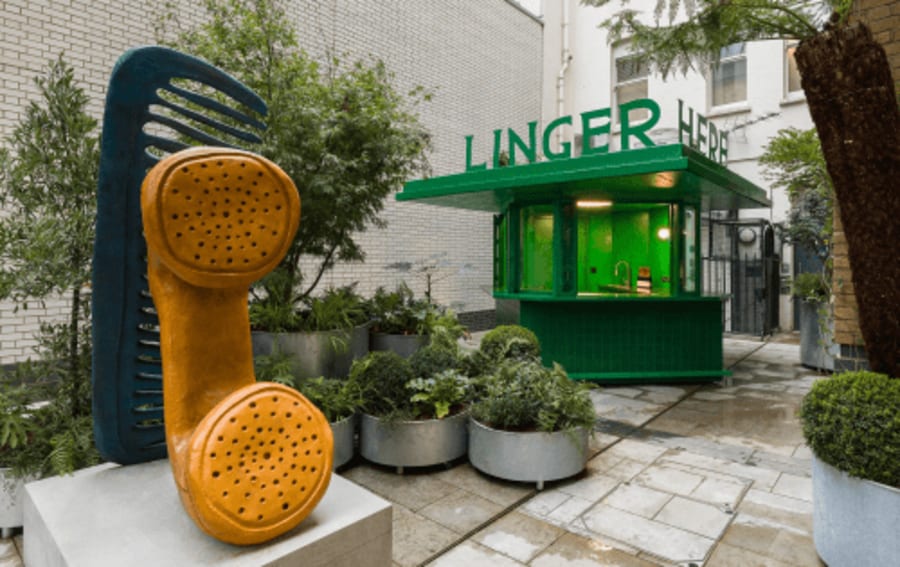Everyone knows something about Yoko Ono. The artist, musician, and peace campaigner has long since reached cultural-icon status. Her name instantly calls to mind pioneering activism that hooked the attention of the world: her Bed-ins for Peace (1969) with husband John Lennon; the couple’s all-time pop great ‘Imagine’ (1971), for which Ono was finally given a co-writing credit in 2017; or their hit ‘Happy Xmas (War Is Over!)’ (1971). Ono’s partnership with Lennon thrust her into the global media spotlight, with uncomfortable results – including, notoriously, being scapegoated for the break up of the Beatles. Yet, there is so much more to her than these collaborations.
Ono’s participatory works radically changed the face of art, as Tate Modern’s upcoming survey exhibition demonstrates. Her early experiments as part of the 1960s avant-garde group Fluxus mix dark material with a witty irreverence that has been a constant throughout her seven-decade career. There was the chilling violence implicit in her landmark performance Cut Piece (1964), where the audience sliced off her clothes and left her naked on stage, or her book of instructions, Grapefruit (1964), whose directions include looking at the sky through someone’s thighs or screaming against the wind. Beyond such iconic works, however, Ono remains a mysterious, and often misunderstood figure. The exhibition’s curator, Juliet Bingham, told us more.
Ono learned how to make music with anything very early on.
‘The musical environment that Ono grew up in was really important for her. At her first school, the prestigious Jiyū Gakuen in Tokyo, which she was enrolled in from the age of four, pupils were tasked with transcribing everyday sounds into music. Later she trained in opera, classical composition, and performance. When she moved to New York in the early 1950s and began developing her first instruction pieces, she envisaged them as scores. For the first one, Secret Piece (1953), she wrote, “Decide on one note that you want to play. Play it with the following accompaniment: The woods from 5am to 8am in summer.”
Her first artworks were the menus she dreamed up during the deprivations of World War II.
Ono witnessed the firebombing of Tokyo and was evacuated with her siblings to the countryside. There were food shortages, so she and her brother would look up at the sky and construct menus. She considers this her first work of art, in the sense of imagining a different world. Her wartime experiences – from being evacuated to the atomic bomb being dropped on Japan – were foundational. They relate to her work around healing, like the smashed vase the audience is asked to put back together in Mend Piece (1966), her early performances in darkness, and the campaigning for peace which has been a cornerstone of her practice.
The sky is her savior.
Ono says she will never give up on life as long as the sky is there. The exhibition includes several works that use the heavens as a motif: from her early Sky TV (1967), where she employed the latest technology to transmit live images of the sky into her apartment in real time, to more recent works like Helmets (Pieces of Sky) (2001), in which she filled upturned World War II helmets with jigsaw-puzzle pieces of blue sky that gallery-goers could take away as keepsakes.
Her films of bottoms are an art world ‘who’s who’.
While Ono’s work touches on challenging subject matter, addressing violence or campaigning for feminist issues, there’s also a lightness to it. The ‘score’ for her ‘Bottoms’ films (1966–67) describes stringing together footage of people’s backsides in place of signatures as a petition for peace. It’s highly irreverent. The first version of the film was created in New York and included her second husband, filmmaker Anthony Cox, the artist Carolee Schneemann and Ono’s young daughter, Kyoko. After she moved to London, Ono made a longer version featuring 365 art-world bottoms, which she saw as snapshots of the saints of our time. It was filmed in the house of Victor Musgrave, the poet, art dealer, and curator.
Her work was censored.
The British Board of Film Classification deemed Bottoms not suitable for public exhibition in the UK. Ono staged a peaceful protest outside their London headquarters and handed out daffodils to reporters. The film was eventually granted an X rating. The artwork for one of the albums she created with Lennon was also censored. The couple posed naked for the front cover of Unfinished Music No 1: Two Virgins (1968), with the verso showing them naked from behind. The album had to be sold covered with a brown paper bag.
Her first campaign for peace with Lennon took place in Coventry.
In 1968, Ono and Lennon each planted an acorn in the ruins of Coventry Cathedral; one faced east, the other west. The action symbolized global unity while the site, which had been bombed in 1940 during the Blitz, suggested reconciliation for the violence of World War II. They then posted acorns to 96 world leaders, asking them to plant their own acorns for peace. The exhibition includes letters responding to the couple from three world leaders: His Majesty Tuanku Ismail Nasiruddin Shah, Yang di Pertuan Agong, King of Malaysia, Prime Minister Golda Meir of Israel, and Mr Jim Fouché, State President of the Republic of South Africa.
Ono and Lennon were cat people.
The couple’s cats included Salt, who was white, and Pepper who was black, as well as Major and Minor and Gertrude and Alice, presumably named after the modernist writer Gertrude Stein and her partner, Alice B. Toklas. Ono later created a sculptural work, Bastet (1993), featuring nine cats with glowing phosphorus eyes. Her song, ‘Cheshire Cat Cry,’ from the Plastic Ono Band’s album Take Me to the Land of Hell (2013) relates to her ideas around pain and healing.
In 1970, Ono performed on the UK chart-music show Top of the Pops, crocheting with a sanitary pad over her eyes.
Ono used darkness in some of her early performances in New York and Japan to focus the audience’s minds on what she called ‘seeking vibration.’ The sanitary-pad blindfold relates to blocking everything out in order to focus. The Top of the Pops performance with the Plastic Ono Band also involved her holding up one-word instructions, like ‘breeze.’
She played the sound of a toilet flushing at Carnegie Hall.
The sound of a toilet flushing was amplified and played intermittently during her first major New York performance at Carnegie Hall in 1961, Of a Grapefruit in the World of Park, to challenge what the audience was expecting from a concert. The rather prosaic noise was used again on one of her most significant albums, Fly (1971), and it’s one of the sound pieces we’ve included in the exhibition. Another is Cough Piece (1961), a directive from her famed book of instructions, Grapefruit, in which she accompanies her own cough with a wooden instrument.
The wishes from her famous ‘Wish Trees’ all end up in Iceland.
In 1996, Ono created her first Wish Tree by inviting people to write their wishes for peace on tags and tie them to a tree. Since then, she’s created numerous ‘Wish Trees’. At Tate Modern, there will be three mature olive trees to which people can add their wishes. Afterwards, the tags are always sent to Ono’s studio in New York, and then preserved at the Imagine Peace Tower she created in Iceland, in 2007, in memory of Lennon. As part of that project, she also had the phrase ‘imagine peace’ printed on billboards and shown simultaneously in 12 cities. The tower currently houses somewhere in the region of one million wishes.’
Yoko Ono is is represented by Galerie Lelong & Co. (Paris).
‘Yoko Ono: Music of the Mind’ is at Tate Modern, London, from February 15 to September 1, 2024.
Skye Sherwin is an art writer based in Rochester, UK. She contributes regularly to The Guardian and numerous art publications.
Full-bleed image: Yoko Ono with, Half-A-Room, 1967 from ‘HALF-A-WIND SHOW’, Lisson Gallery, London, 1967. Photo © Clay Perry.


